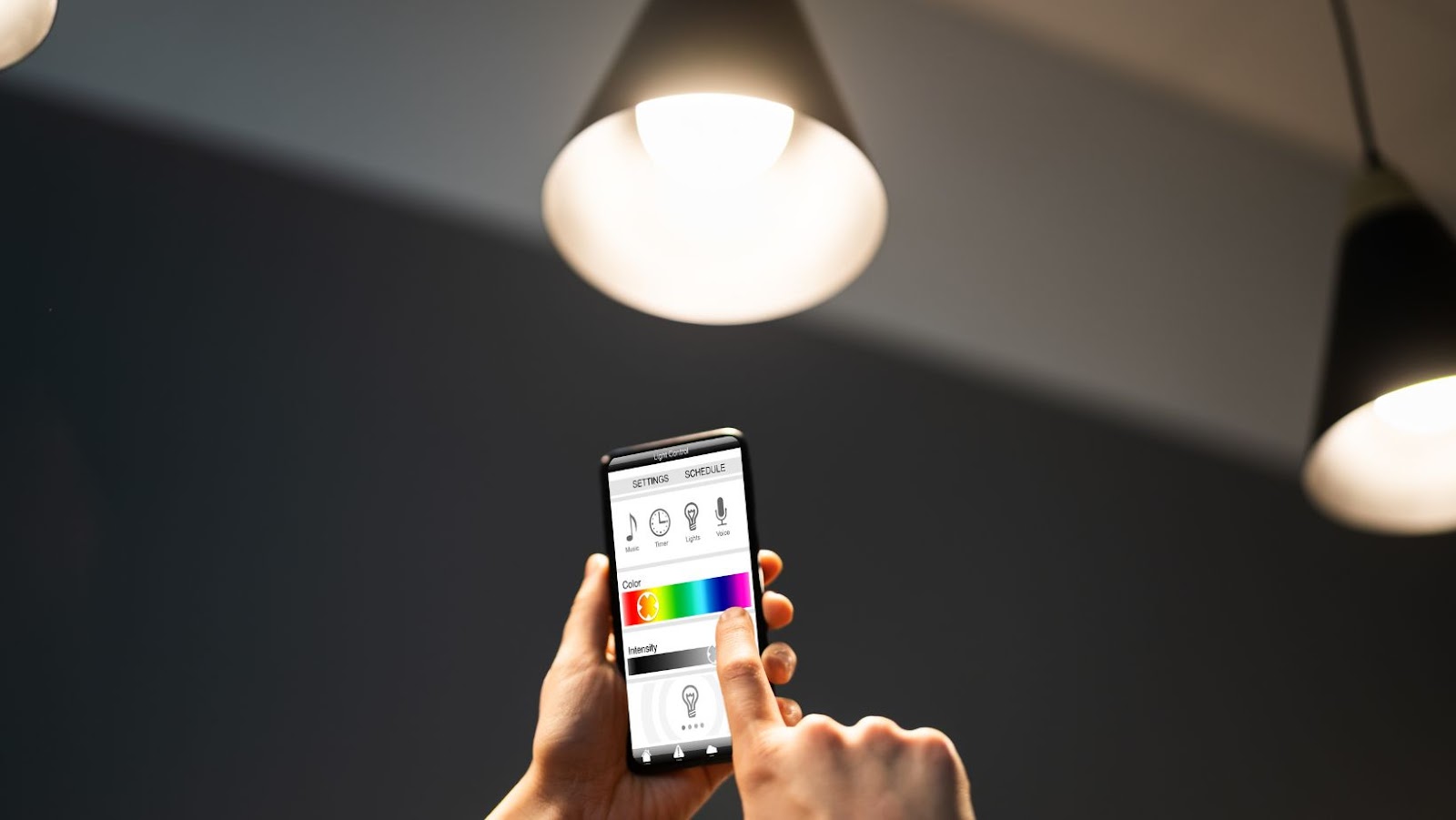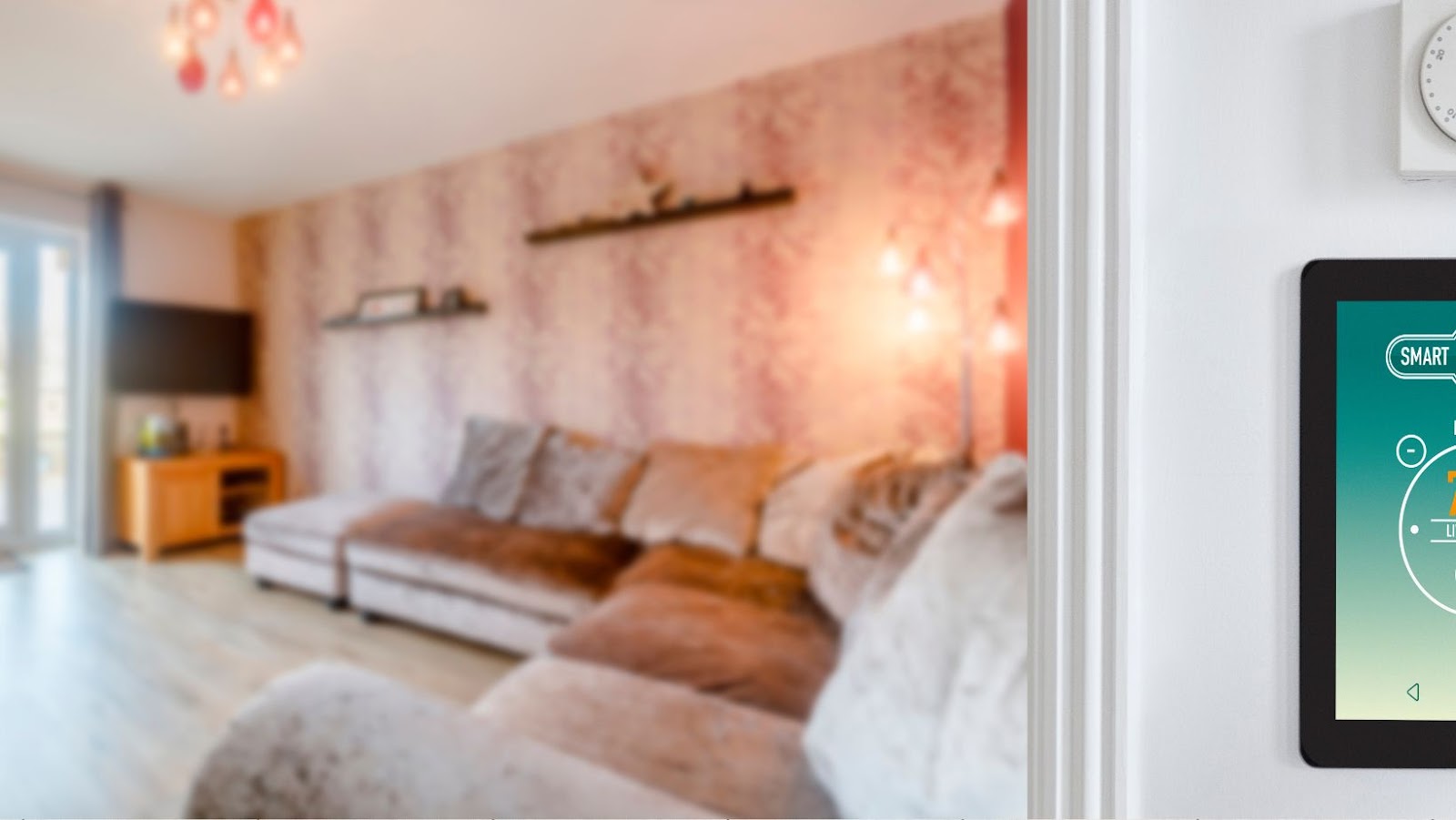
What is smart lighting
Smart lighting is a cutting-edge technology that allows you to control lights in your home using an app or other smart device. You can customize the brightness, color, and even the schedule of your lighting systems. Smart lighting is a huge convenience and can even help you save energy.
In this article, we will explore how smart lighting works and the benefits it can offer:
Definition of Smart Lighting
Smart lighting is lighting that can be controlled through various technologies such as sensors, switches, remotes, networks and web-enabled devices. These lights have capabilities that help you automate your home or business more easily and efficiently. Smart lighting typically consists of LED bulbs, but can also extend to lamps, recessed lights and other fixtures depending on the system.
The ability to control your home’s lighting automatically is nothing short of amazing. You can control each light within a room or throughout your entire home with the touch of a button or voice command. Smart lighting systems are also able to save you money on electricity costs since they will turn lights off when no one is occupying the room.
In addition to automation capabilities like dimming and scheduling, smart lighting can also provide features like color changing mood settings and compatibility with various applications such as IFTTT (If This Then That) recipes or voice assistants like Alexa and Google Home. Connecting smart home products together further streamlines the automation process for ultimate convenience in converting your house into a “smart” home.
Benefits of Smart Lighting
Smart lighting solutions are a great way to not only automate your home, but also create a comfortable environment tailored to your lifestyle. Smart lighting systems offer a range of convenient capabilities and functionalities that provide far more than traditional light fixtures or bulbs.
From built-in energy saving functions and easy installation, to voice control and remote access, here are just some of the benefits of outfitting your home with smart lighting:
- Energy savings: Smart lighting systems help you reduce energy costs by enabling you to set schedules for turning lights off when no one is home or dimming them during certain hours. It can also help identify any inefficient patterns in your current lighting setup and recommend improvements.
- Convenience: Most smart light solutions can be activated with either voice commands or from the convenience of a mobile app. This means that you never have to worry about manually turning lights on after a long day at work or in the middle of a dark winter night as you head down for some late night snacks!
- Safety: Smart lights can be set up to simulate activity in the home when no one is around, giving off the impression that someone is there even if the house is empty – making it harder for would be burglars who may want to scope out an empty house before attempting a break in.
Types of Smart Lighting
Smart lighting is a type of automated, energy-efficient lighting technology that can be easily controlled and programmed to create the perfect atmosphere in your home or workplace. Smart lighting can help you save money on your energy bill, as well as create a safe and secure environment.
There are a few types of smart lighting available, each offering their own unique advantages. This article will cover the different types of smart lighting and the benefits of each:
- LED lighting – LED lighting is the most energy-efficient type of lighting and can last up to 25 times longer than traditional incandescent bulbs.
- Fluorescent lighting – Fluorescent lighting is more energy-efficient than traditional incandescent bulbs and can last up to 10 times longer.
- CFL lighting – CFL lighting is a type of fluorescent lighting that is more energy-efficient than traditional incandescent bulbs and can last up to 10 times longer.
- Smart bulbs – Smart bulbs are LED bulbs that can be controlled remotely using a smartphone or tablet.
Wi-Fi Connected Lighting
Wi-Fi connected lighting systems are the most common type of smart lighting. These systems involve bulbs, strips, and fixtures that are connected to your home Wi-Fi network. This allows you to control them from your smartphone or tablet using apps or voice controls.
Most Wi-Fi connected lighting systems come with a controller hub, which is a device that connects to your router and acts as the brain of the system. You can connect compatible bulbs, strips or fixtures directly to this hub by either wirelessly connecting them or plugging in an adapter directly into an outlet. Once installed, these lights can be turned on and off using an app on your phone or voice assistant like Alexa and Google Home.
You can also set up scenes, schedules and geofencing rules for these lights so they turn on when you enter/leave a room or program them to turn off if you forget. Some systems allow you to control multiple lights at once and sync their colors with music for special occasions like parties. Depending on the system you choose, some may even have additional features such as color temperature changing capabilities so you can adjust the “mood” of your space according to your preference!
Bluetooth Connected Lighting
Bluetooth connected lighting offers a wireless solution that can be controlled with a smart phone or tablet. The technology uses short-range radio signals to allow smart gadgets to interact with light bulbs. To use this type, users need to set up the lights in their network and then connect them to an app on their mobile device.
Users can control the intensity of Bluetooth connected lighting through the app and set specific timers, moods or patterns. As long as all of the components are in range, users will be able to control their lights from anywhere. One limitation is that many of these systems are limited by the range of Bluetooth signals, which typically doesn’t go further than 30 feet from a device like a smartphone or tablet.
With Bluetooth connected lighting, users can access a range of settings allowing them to customize their experience for different areas or activities. This type is also designed for convenience and allows users to turn lights on or off without ever having to get out of bed. With some brands, voice commands like “turn off living room lights” may even be recognized by certain settings making life even easier.
Infrared Connected Lighting
Infrared Connected Lighting, also known as IrLite, is an ideal lighting solution for older homes and buildings. It works by using infrared light signals to control nearby temperature and lighting systems. This type of connected lighting has become increasingly popular because it is not dependent on Wi-Fi connectivity like other smart home systems.
IrLite works with any existing light fixtures in your home or building and makes it easy to adjust lighting level and settings directly from your phone or computer. This type of connected lighting system can be used for energy efficiency, safety, ambiance control, or just to add convenience to your home or building. It can be used in a variety of situations including controlling automatic shut-off lights when no one is home or a local security system activation when movement is detected in the area.
This system also often comes with an additional layer of security which enables users to keep track of their environment through a password encrypted wall switch which only allows access by authorized users that have been programmed into the system. IrLite offers some great advantages such as energy savings, flexibility in settings control, safety features integration and increased convenience over traditional lighting systems. With this updated technology you are able to enjoy the same benefits that come with smart home automation but at a much lower cost than traditional smart home systems provide.

How Smart Lighting Works
Smart lighting is a system of automated lighting controls which use sensors, radios, and automation to adjust lighting levels within your home. This technology is particularly useful in connecting different areas of your house and enabling you to control them all with one app. Smart lighting has a variety of features which make it a great choice for anyone looking to save energy and money.
Let’s take a look at how this technology works:
Smart Lighting Systems
Smart lighting systems allow you to control the intensity, color, and temperature of the lights in your home or business using a mobile device, computer or other networked device. Smart lighting can be used to help conserve energy and save money by dimming or turning off lights when they are not needed. It can also provide a customized, comfortable atmosphere in any room with adjustable colors and temperatures. Smart lighting is an important part of the larger smart home trend that is taking off these days. Here’s an overview of how smart lighting works:
Hardware: In most cases, a light switch is attached to each light fixture that you want to control remotely. This switch then connects wirelessly to an Internet gateway (such as a smartphone or tablet) which then connects your devices to each other as well as other Internet-connected “smart” devices such as refrigerators, thermostats, cameras, locks and more.
Software: Once connected, the mobile device allows you to manage settings for all of your fixtures – from switching individual lights on and off or dimming them down low – all within one simple app. You can also set up scheduled times that lights turn on or off automatically when you’re away from home (for security reasons). Other timesaving features include pre-set “scenes”; quickly changing the brightness of multiple lights at once in order to better accommodate movie watching/dinner parties/etc., etc., right from your phone/tablet/computer with just one touch.
Connecting Smart Lighting to Mobile Devices
To control your smart lighting system, you’ll need to connect the product to a hub and then use an app on your mobile device. Smart lighting hubs are tiny devices that provide a connection between your phone or tablet and the products you’re using. Depending on what system you have, these hubs may plug into an outlet or connect directly to your router via ethernet cable.
Once the controller has been set up, it must be connected to any compatible smart lights in order for them to be operated with a mobile device. To do this, all of the bulbs have to be powered on and placed within range of the hub. The bulbs may also require certain settings, like:
- Setting them up as an individual light;
- Pairing multiple lights; or
- Enabling features like motion sensors or room scheduling.
Once all of these settings are configured correctly in the app, users can begin operating their lighting from their phones or tablets.
In addition to managing individual lights from a mobile device, more advanced setups can make use of voice commands. Smart home systems like Google Home and Amazon Alexa integrate with compatible devices and allow them to respond to voice commands such as “turn on/off living room lamp” or “dim kitchen lights.” When setup correctly, this technology can make taking control of your lighting even easier than using a smartphone app!
Automating Smart Lighting
Smart lighting is designed to be energy efficient and cost-effective, as well as enhance the visibility, style, and convenience of your home. Smart lights can be connected to a home automation or unified control system like Amazon Alexa, Google Assistant, Apple HomeKit, and IFTTT (if this then that) creating a home network of lighting devices. Automation is where smart lighting really stands out. Smart bulbs can adjust their brightness levels over time with programs that mimic natural sunlight even when sunlight isn’t available.
You can also automate your lights to turn on and off at specific times and in specific configurations. You may program them to turn off during certain times of day when you are away from home like the morning or evenings so you don’t waste energy running lights all day. Programs like IFTTT enable you to connect multiple devices together so they all work in unison. For example, you could have your thermostat set up to trigger your living room smart light bulbs as soon as it reaches a preset temperature setting indoors so you don’t freeze!
Other features for scheduling include:
- setting up occupancy sensing that automatically turns the lights on when someone enters the room and turns it off when they leave;
- dimming settings according to sleeping schedules;
- sunrise/sunset programming for automatic adjustments according to daylight hours; and
- an Away mode which simulates occupancy while you are away from home via controlled switches or motion detectors.
Perhaps one of the most impressive aspects of smart lighting is that modern solutions come with intuitive controls enabling users to manage their lights via voice commands using virtual assistants like Amazon Alexa or Google Home.

Smart Lighting Applications
Smart lighting involves the use of modern technology to provide customized lighting solutions in commercial and residential settings. With this technology you can create scenes, program lighting schedules, and automate lighting controls. Smart lighting applications add convenience, comfort and security to any property and can be adapted to suit any lifestyle.
Let’s explore some of the applications of smart lighting:
Home Automation
The most common form of home automation using smart lighting systems is lighting control; this means having control over when and at what level your lights turn on, off, dim and brighten. For example, rather than walking from room to room turning all the lights off before going to bed or coming home to a dark house at night, the user can program their lights to automatically turn off or on in certain rooms after a certain amount of time has passed. This flexibility is possible through motion detectors, timers and sensors that activate certain events within the lighting system.
In addition to personalizing individual rooms and areas with timers or motion sensors as an automated system, you can also connect multiple lights under one dashboard so they can be powered on/off together with a single command. This provides a great addition feature for convenience while also helping with energy efficiency. Your dashboard will give you insights into how much electricity you’re using allowing you to make positive adjustments in your power consumption accordingly. Smart lighting installation enables users to save money by not having their lights stay on for unnecessary lengths of time when no one is present in the environment. With the ability to customize different scenes for various occasions such as watching movies or entertaining guests, smart lighting adds a level of ambiance that surpasses any traditional light switch setup.
Security
Smart lighting can also provide a greater level of home security. For example, you can set on/off schedules with your smart lights, which helps to make it appear as if someone is home even when they’re away. You can also set your lights to turn off at a certain time, alerting you if there’s activity in the house after hours.
Additionally, some models come with motion sensors that detect movement and trigger the lights to turn on or brighten. This can help to scare off or detect any potential intruders. You can even take control remotely from anywhere if you want to check-in on your home from another location by viewing the footage from any connected security cameras that are part of your smart lighting setup.
Energy Efficiency
Smart lighting systems offer many potential benefits, one of the most attractive being improved energy efficiency. Smart lighting technology leverages built-in sensors, switches, dimmers and controllers to adjust the level of illumination in a room or space based on the demands and requirements at the time. This type of adaptive lighting helps to conserve energy that’s not actively being used. This can reduce electricity costs and your environmental footprint over time. Some smart systems even utilize natural daylighting when possible, adjusting window blinds or shades in order to take full advantage of seasonal variations in sunlight intensity.
Beyond merely turning lights on or off as needed, smart lighting systems can be programmed with automated triggers such as activity sensors and occupancy detectors. For example, if your living room is unoccupied for a certain period of time, your lights can automatically dim or shut off entirely until someone enters the space again – something that wouldn’t have been possible with traditional light switches alone. Smart light bulbs themselves often come with preset timers that can help you save money by avoiding wastage due to leaving lights on unnecessarily for long periods of time – another great practical benefit!
Conclusion
In conclusion, smart lighting systems provide a great deal of convenience and energy efficiency. Through technologies such as Wi-Fi, Bluetooth, and Zigbee, you can control your lighting from any corner of the house. You can customize the settings to your preferences, giving you maximum flexibility when managing the lights in your home.
Additionally, many of these systems allow for scheduling options so you can set up when lights should be turned on and off automatically. It’s a great way to save energy while still having the convenience of having all your lights easily accessible.



